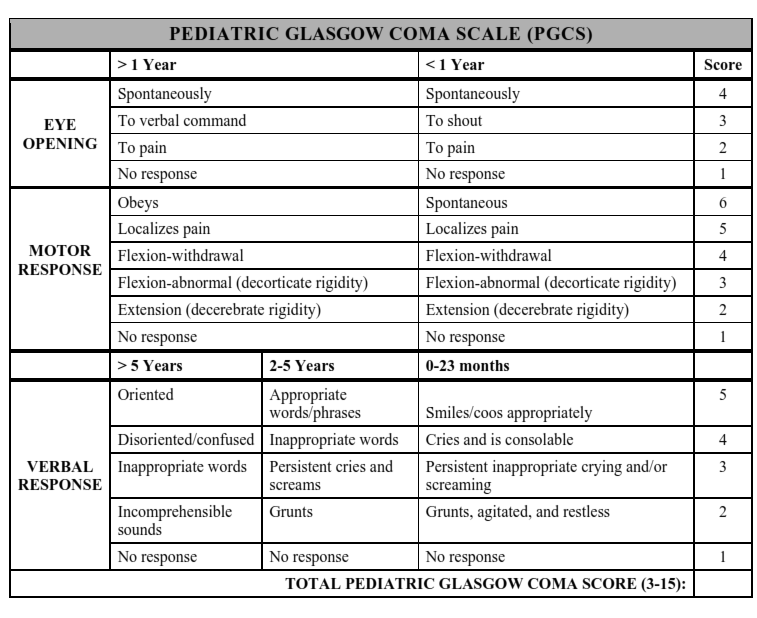• The (GCS) is an evaluation tool used by neurologists and medical professionals to give a reliable, objective record of a patient’s conscious state as well as an initial assessment whenever a (TBI) is suspected or has occurred. Glasgow Coma Scale Origins The scale was first published by Graham Teasdale PhD, and Bryan J. Jennet, PhD in 1974, both professors of neurosurgery at the University of Glasgow’s (Scotland) Institute of Neurological Sciences at the city’s Southern General Hospital.
Pediatric Glasgow Coma Scale Pdf File TBI Classification Systems. TBI injury severity can be described using several different tools. The Glasgow Coma Scale. GLASGOW COMA SCALE: Do it this way RATE For factors Interfering with communication, ability to respond and other injuries Eye opening, content of.
The was first used to assess patients’ level of consciousness following a head injury, but was quickly adopted by the medical industry and is clinically accepted by EMS workers, nurses, and doctors worldwide to evaluate trauma patients during triage, as well as those recovering in intensive care units. What Is Autohotkey Exe. Using the GCS Any type of head injury may be detectable based on GCS evaluation results, and the assessment can be performed very quickly. Severe injuries, resulting in complete unconsciousness, typically receive the lowest score and typically prompt immediate surgical intervention. The following closed head injuries can also impact the GCS evaluation:• Concussions • Cerebral Contusions • Intracranial Hematomas (Subdural/Epidural) • Diffuse Axonal Injury Understanding How Glasgow Coma Scale Works The scale is composed of three tests: Eye (E), Verbal (V) and Motor responses (M). Both the three independent scores and the total sum are considered separately in the patient’s assessment.
